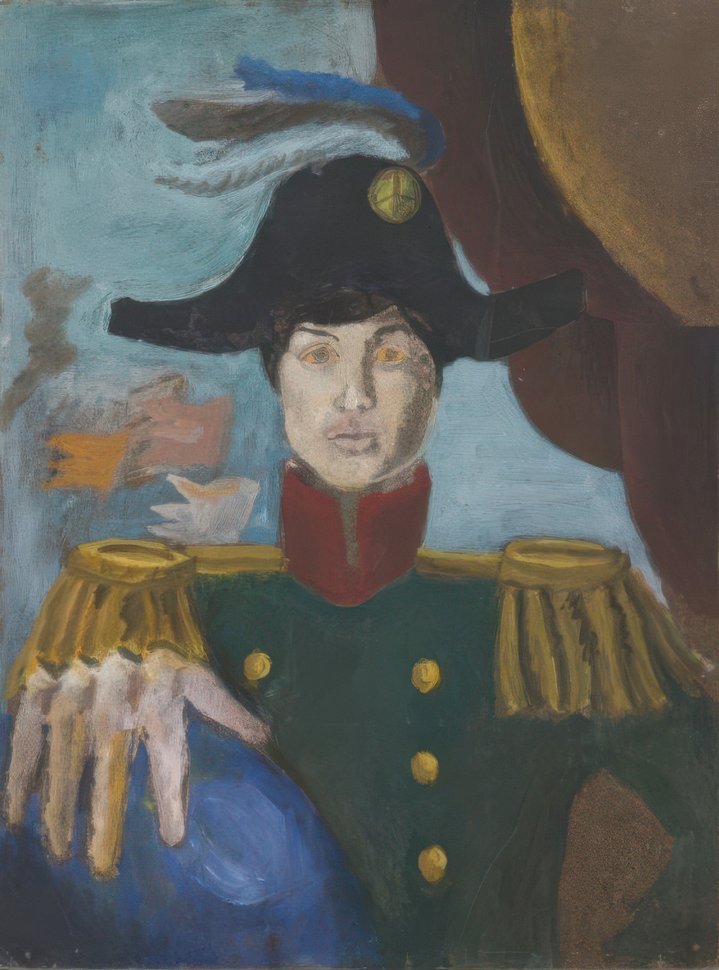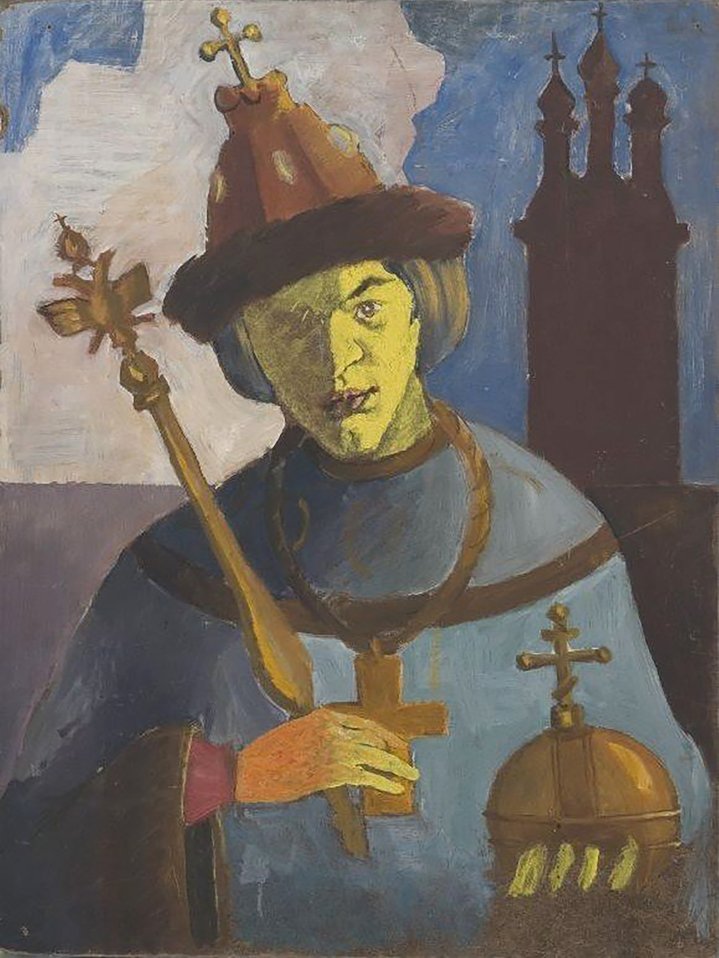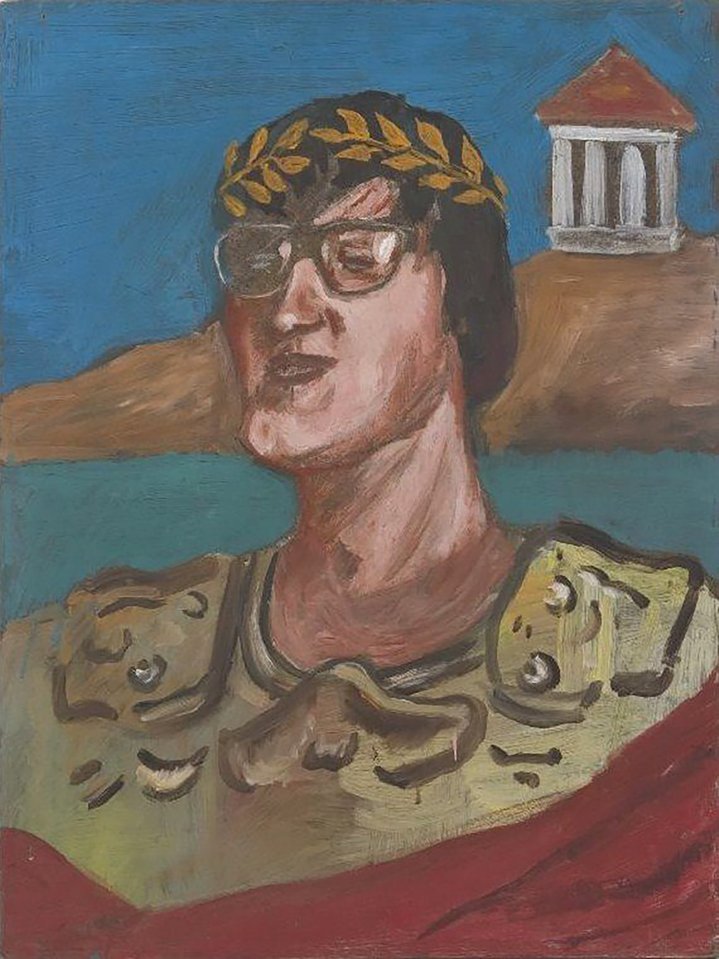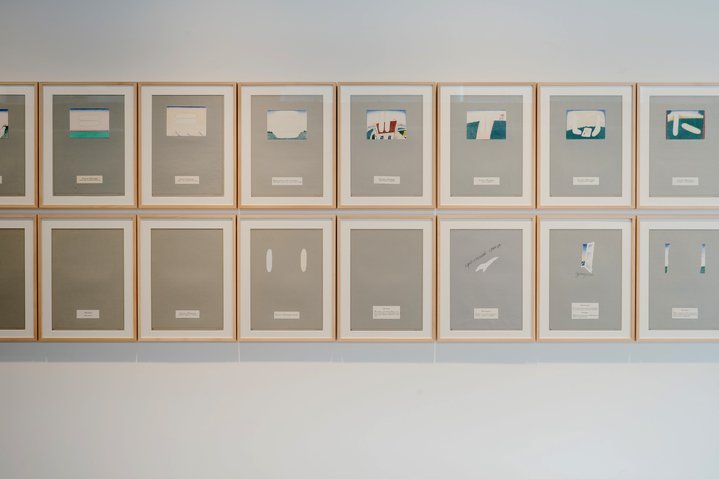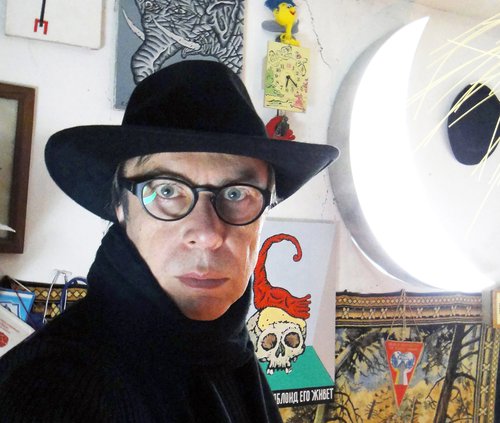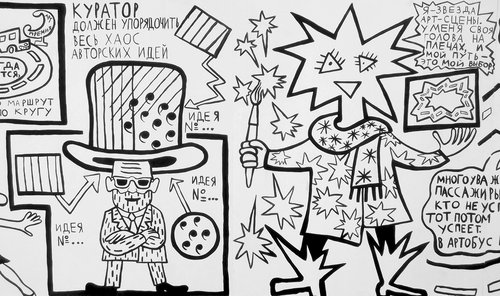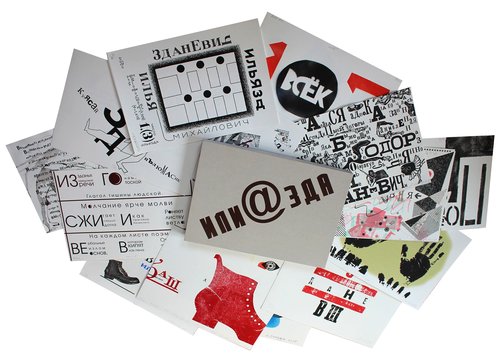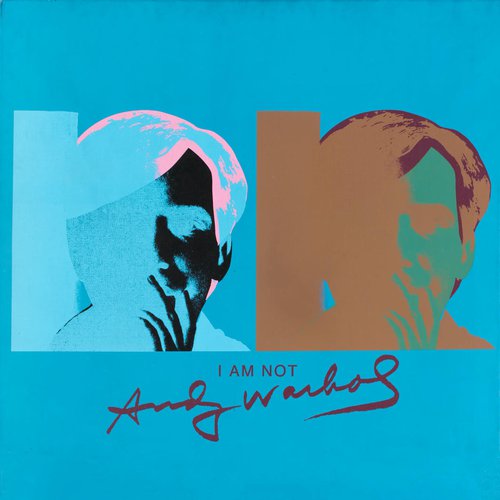How Artists Create Myths about Their Contemporaries
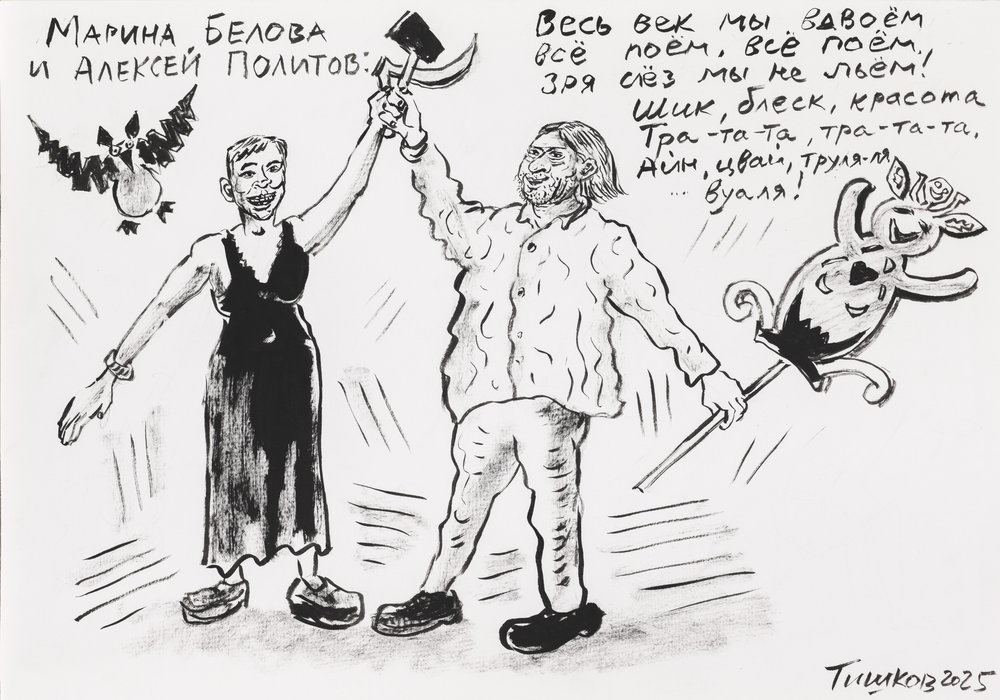
Leonid Tishkov. ZhZKh. Alexey Politov and Marina Belova, 2025. Courtesy of Krokin Gallery
Moscow’s art scene has long treated the artist as a character – part maker, part myth – from the Moscow Conceptualists’ alter egos to today’s post-conceptual portraits. Leonid Tishkov’s witty ZhZKh drawings, first glimpsed on tableware at the bohemian Mukha Club and now expanded at Krokin Gallery, distil those myths into crisp, ironic vignettes. Framed against legacies of the Avant-Garde and Socialist Realism, the show tracks how personas, in-jokes, and “closed” communities keep generating new artist-mythologies for a harsher present.
At the beginning of our new millennium, one of the bohemian hotspots in Moscow was the Mukha Club (The Fly Club), a Russian acronym for Musical and Artistic Avant-Garde (MUKhA). The club’s tableware was decorated with drawings by Leonid Tishkov (b. 1953), depicting Russian artists in a sketchy, ironic style. Many years later, in 2021, the artist published a book called ‘ZhZKh. The Lives of Remarkable Artists of Various Countries and Peoples’ through the IMA-press publishing house. For this latest ‘ZhZKh’ exhibition at Krokin Gallery, Tishkov has expanded his series with new works portraying other artists in the gallery’s roster.
The conception of the artist as an aesthetic form dissolves the apparent contradiction between the subject and object of art: the creator becomes the creation. The proliferation of artist-centred narratives in Moscow at the turn of the twentieth and twenty-first centuries is no coincidence; it signals deep shifts in how artists reflect on their own trajectories and on the social field around them, after the long shadows of the Avant-Garde and Socialist Realism. If the Avant-Garde endowed artists with a sense of personal strategy, Socialist Realism fostered a critical estrangement from one’s own labour.
Moscow Conceptualists had a marked penchant for inventing sub-personae. Komar and Melamid, for instance, devised the fictional painter Nikolai Buchumov and produced works under his name: a supposed realist who, having “lost an eye in battle with the avant-gardists,” forever painted the edge of his own nose intruding on his field of vision. Others pursued self-transformation into fixed roles – Konstantin Zvezdochetov (b. 1958) performing the clown-artist, promoting laughter both in his works and in public appearances. Such strategies constituted a pointed reassessment of modernist conventions built on aura and the defence of uniqueness.
The break from modernism was laid down by the Moscow Formalists in the 1920s, particularly in Yuri Tynianov’s theory of poetic language, along with the term “lyrical hero,” representing the poet’s creation of an alter ego, whose revelation is the core theme of their work. Transferring this idea into the literary Moscow art scene of the 1970s gave rise to a range of characters. Later it evolved into the idea that the art community is a gathering of imaginary personalities. This idea is illustrated by an early series of portraits by Konstantin Zvezdochetov, where he depicted members of the Mukhomor art group as historical characters. Some works in this series were displayed again at the Rosizo gallery in an exhibition ‘Art Behind Closed Doors’, including Sergei Mironenko’s (b. 1959) portrait as a Roman patrician crowned with a golden wreath (1979, from the MANI Museum collection). Zvezdochetov portrayed himself as a Russian tsar – in the Monomakh Hat, holding a sceptre and orb (1979, from the MANI Museum collection).
Another type of invented characterisation can be seen in Viktor Pivovarov’s (b. 1937) albums ‘Kabakov and Pivovarov’ (1982) and ‘Dramatis Personae’ (1996). The earlier album ‘Kabakov and Pivovarov’ is currently on “open storage” at the Garage Centre for Contemporary Culture in Moscow. In the album, the two protagonists are two elongated ovals resembling text balloons (as in comics, where such balloons typically contain the thoughts of the characters) – empty balloons (one with yellow, the other with blue rims) travel, while the captions tell us, for example, that ‘Kabakov and Pivovarov fly over mountain peaks.’ This story tells of the soul’s wanderings, experienced by dreamers or people who are hallucinating. ‘Dramatis Personae’ immerses the viewer in the world of the Moscow Conceptualists, depicted both symbolically and allegorically. These albums reveal the origin of Moscow Conceptualism in Surrealism, with its themes of dreams and mystery.
In contemporary post-conceptual Moscow art, the production of different character series is an organic part of the intellectual landscape. Leonid Tishkov is no exception. His ‘ZhZKh’ series is an ironic appropriation of the biographies of famous artists, past and present. Tishkov reworks the myths artists have about themselves and those created around them, seeking to highlight the dominant motif in each. Paul Gauguin (1848–1903) is linked to Tahiti, Van Gogh (1853-1890) to an ear.
Contemporary art is just as much a source of myths, though these are less widely known. Tishkov’s series of drawings illustrates personal mythologies. Oscar Rabin (1928–2018), a Russian artist who painted gloomy suburban barracks all his life (including the last four decades spent in France), is shown embracing a Russian birch tree against the backdrop of the barracks in his native Lianozovo, in an obvious fit of nostalgia. Alexander Ponomarev (b. 1957), creator of the Antarctic Biennale, plays the guitar to penguins under the slogan ‘Antarctica is ours!’ – echoing the infamous ‘Crimea is ours.’ Alexander Mareev (b. 1969), who loves drawing dozens of insects on a single page, is surrounded by dozens of mosquitoes.
Many groups of Russian artists after the avant-garde era were closed quasi-sectarian communities. Such groups actively generate their own mythologies, knowledge of which distinguishes insiders from outsiders. Leonid Tishkov’s ZhZKh project shows that this need for mythologisation has not vanished in our own contemporary era. On the contrary, the art community today successfully produces new mythologies and remains interested in wholeness amid a hostile social environment.
Leonid Tishkov. ZhZKh (Life of Remarkable Artists)
Moscow, Russia
18 September – 26 October 2025







